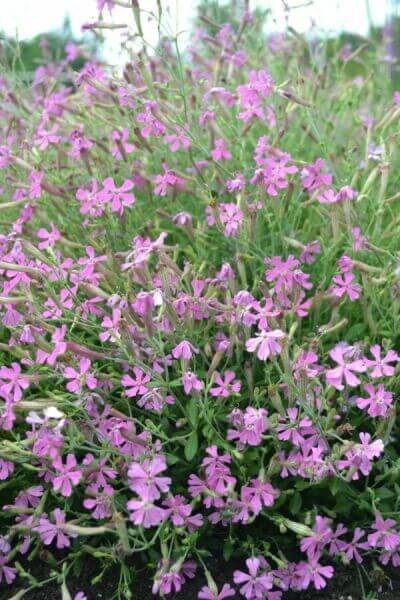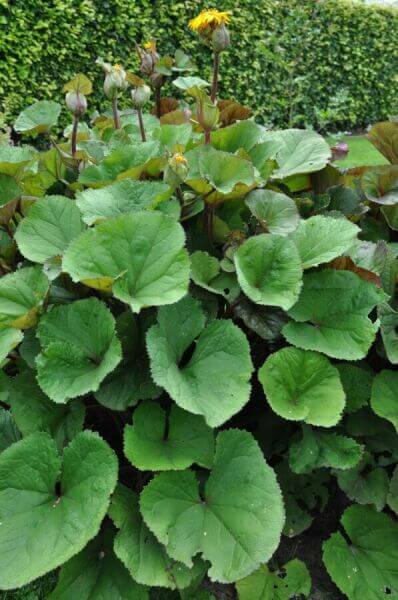Hedge Plants For Seaside Gardens
Hedge Plants For Seaside Gardens
Blog Article
Best Hedge Plants For Privacy
Improve your garden's appeal with lush hedge varieties such as Yew (Taxus), Thuja, Laurel, Photinia, and Bamboo, celebrated for their structural integrity and environmental benefits.
Yew and Thuja supply evergreen coverage and winter season durability, while Laurel offers fast development and broad, fragrant leaves.
Photinia includes seasonal charm with its dynamic red foliage, and Bamboo lends a low-maintenance, serene ambiance.
These hedges enhance air quality, reduce sound, and create tranquil, private areas.
Proper planting, spacing, and upkeep make sure vigorous growth and eco-friendly consistency.
Check out how these lush varieties can raise your garden's appeal and wellness.
Key Takeaways
Transform Your Garden With Lush Hedge Varieties
- Select Yew for its thick, evergreen growth and unparalleled longevity.
- Select Laurel for its quick development and broad leaves, guaranteeing fast personal privacy.
- Pick Photinia for its dynamic seasonal foliage, which turns a striking dark red.
- Use Bamboo for a low-maintenance, winter-hardy hedge with visual appeal.
- Area plants 2-3 per meter and prune regularly for optimal growth and health.
Popular Hedge Plants
When transforming a garden with rich hedge varieties, it's important to think about popular hedge plants such as Yew, Thuja, Laurel, and Photinia due to their special attributes and advantages.
Yew (Taxus) is extremely esteemed for its longevity and dense, green growth, making it a prime option for sustaining landscapes.
Thuja is kept in mind for its evergreen foliage and robust winter season strength.
Photinia includes seasonal vibrancy with red leaves that darken in time, producing dynamic visual appeal.
Laurel provides fast growth and fragrant, broad leaves, perfect for fast personal privacy.
Furthermore, Bamboo is an outstanding choice for atmosphere, using a low-maintenance, winter-hardy alternative that improves the garden's aesthetic with its elegant, swaying walking canes.
These choices deal with a range of horticultural needs and choices.
Advantages of Garden Hedges
Garden hedges use a multitude of advantages, making them a valuable addition to any landscape. These natural barriers are economical to execute and provide substantial wind security, enhancing air blood circulation and contributing to sound reduction. The dense foliage of hedges like Thuja and Beech ensures personal privacy by blocking visibility, developing a peaceful and secluded environment.
Hedges likewise play an important function in microclimate policy, supplying a stable environment that fosters plant development and minimizes temperature level fluctuations. Their complex leaf structures filter pollutants, improving air quality and adding to a healthier garden community.
Moreover, hedges master sound reduction, taking in and deflecting acoustic waves to lower ambient noise levels. This dual performance of supplying both visual and acoustic personal privacy enhances the overall serenity and visual appeal of any garden.
Planting and Upkeep Tips
For a successful hedge, precise preparation of the planting area is important. Ensure the soil has appropriate pH and drain to support strong root advancement.
Area the plants properly for the chosen species. Water the hedge frequently during its initial development phase, changing as needed with seasonal changes.
Carry out a methodical pest control and illness prevention method, using chemical or natural treatments when needed. Routinely check for aphids, mites, and fungal infections.
Apply mulch to retain moisture and reduce weeds. Seasonal pruning promotes thick growth and air flow, vital for plant health.
Following these standards will assist you cultivate a lively, well-maintained hedge that enhances the beauty of your garden.
Spacing and Trimming Guidelines
Spacing and Trimming Guidelines
Appropriate spacing and cutting are important for cultivating healthy, aesthetically appealing hedges. Appropriate spacing ensures each plant receives sufficient nutrients, light, and airflow.
Follow these guidelines for optimal hedge maintenance:
- Spacing: Position hedge plants 2-3 plants per meter to motivate robust development.
- Pruning Methods: Routine pruning is vital for maintaining preferred hedge height and shape. Cut brand-new development in summertime and cut back older wood during winter.
- Seasonal Care: Change cutting schedules and approaches according to seasonal requirements to guarantee plant health.
- Hedge Height: Routinely monitor and cut to keep the wanted hedge height and accomplish uniform visual appeals.
Sticking to these steps will ensure your hedge grows, improving both the appeal and functionality of your garden.
Choosing the Right Hedge
Picking the Right Hedge
Choosing the suitable hedge includes assessing factors such as fully grown height, foliage density, and ecological resilience. Effective hedge plant selection requires comprehending each species' development qualities and site-specific adaptability.
For instance, click here Yew (Taxus) offers exceptional longevity and thick growth, while Thuja is notable for its winter season resilience. Furthermore, considering upkeep requirements is crucial; fast-growing types like Laurel or Privet demand routine trimming, whereas low-maintenance alternatives like Bamboo or Ivy may be preferable for those looking for minimal maintenance.
Environmental elements such as soil type, light availability, and moisture conditions must also direct the choice process. This mindful approach guarantees the chosen hedges will grow, offering both functional and visual benefits to the garden landscape.
Delivery and Planting Suggestions
To ensure your hedge plants prosper, they need to be delivered by specialized carriers and planted immediately upon arrival.
Follow these necessary steps for successful planting:
- Soil Preparation: Improve the soil with raw material to improve drainage and nutrient material.
- Planting Depth: Develop a trench two times the width and equal to the depth of the root ball.
- Watering Methods: Water completely after planting, keeping the soil regularly damp but not filled.
- Mulching: Apply a layer of mulch to retain moisture and suppress weeds.
Consumer Support and Service
Provided the vital role of prompt support in horticultural pursuits, our client support team is available six days a week through telephone, email, and social media to use professional suggestions and promptly attend to any concerns. Their dedication to fast response times makes sure client satisfaction by fixing queries connected to plant health, optimal planting techniques, and maintenance schedules.

-------------------
Within 24 hours
This detailed support system, reinforced by an excellent 9.3/ 10 client rating, highlights our dedication to improving the gardening experience for every single customer.
Frequently Asked Concerns
For How Long Does It Consider Hedge Plants to Establish?
Hedge plants generally require one to 3 years to become totally established, with the exact period varying by species and growing conditions.
Reliable care during this important period is necessary for robust growth. Constant watering, vigilant weed control, and suitable fertilizer application are pivotal in promoting strong root development.
For instance, fast-growing species like Laurel may develop faster, while slower-growing ranges such as Yew might take longer. Persistent maintenance accelerates the facility procedure, resulting in dense and healthy hedges.
What Are the Finest Hedge Plants for Privacy?
The question of the very best hedge plants for personal privacy involves examining evergreen and deciduous options.
Evergreen hedges like Thuja, Laurel, and Cypress offer year-round coverage, making sure constant personal privacy.
In contrast, deciduous hedges such as Beech offer seasonal privacy, shedding leaves in chillier months.
Secret upkeep pointers for privacy hedges include routine cutting, fertilizing in spring, and correct spacing-- typically 2 to 3 plants per meter.
Additionally, consistent watering and persistent weed removal are important for promoting healthy, thick development.
Can Hedge Plants Attract Wildlife to My Garden?
Yes, hedge plants can attract wildlife to your garden by providing essential benefits like shelter, food, and nesting websites, therefore boosting regional biodiversity. Yew, holly, and laurel are outstanding for attracting birds, while ivy supports a variety of pests.
Nevertheless, it is very important to keep in mind that there are some disadvantages, such as increased maintenance to handle insects and regular upkeep. Thoroughly choosing and maintaining hedge ranges can assist balance these disadvantages and benefits, eventually fostering a vibrant and sustainable community in your garden.
Exist Any Blooming Hedge Plants Available?
Yes, there are flowering hedge plants available that can boost the charm of your garden.
For instance, Elaeagnus, also called Olive Willow, produces aromatic white flowers in the fall, adding a touch of beauty.
Photinia, another popular choice, showcases dynamic red leaves that mature into an abundant green, creating a dynamic visual result throughout the seasons.
To guarantee these plants thrive, it's important to practice proper pruning methods and seasonal maintenance, such as cutting new development in the summer season and cutting down in the winter.
These steps will assist maintain the health and visual appeal of your flowering hedges.
How Do I Prevent Insects in My Hedge Plants?
To avoid pests in hedge plants, utilize natural bug control methods and preserve correct hedge care. Introduce advantageous pests like ladybugs, which prey on harmful insects, to develop a well balanced ecosystem.
Routinely examine your hedges for indications of problem and quickly eliminate any afflicted parts to avoid the spread. Make sure the health of your hedges by using balanced fertilizers and providing sufficient water.
Use mulching to keep soil wetness and correct spacing to lower plant tension and promote robust development. These practices jointly assist in decreasing bug concerns and keeping a healthy hedge.
Conclusion
In essence, picking the ideal hedge ranges such as Yew, Thuja, and Laurel can transform any garden into a relaxing sanctuary. These plants offer year-round greenery, enhance visual appeal, and deal useful benefits like sound decrease and wind security.
Proper planting techniques, precise spacing, consistent watering, and seasonal trimming are essential for optimum growth.
Trustworthy delivery services and expert consumer support ensure a smooth experience from purchase to planting, making it simpler than ever to raise your outdoor area.
Garden hedges provide a plethora of advantages, making them a valuable addition to any landscape. These natural barriers are cost-efficient to execute and offer significant wind defense, enhancing air blood circulation and contributing to noise decrease. The dense foliage of hedges like Thuja and Beech guarantees privacy by obstructing presence, creating a remote and serene environment.

Pruning Strategies: Routine pruning is important for maintaining wanted hedge height and shape. Cut new development in summertime and cut back older wood during winter season.
Report this page